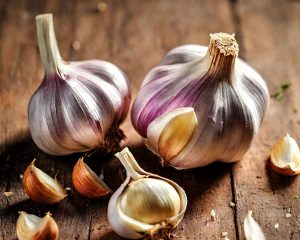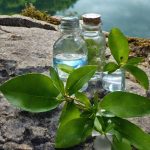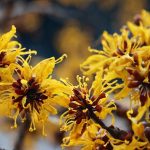Let’s Nail Down the Problem
Let’s face it, toenail fungus isn’t just a minor nuisance. For many, it’s an embarrassing issue that can make beach days a no-go and can lead to a constant hunt for the thickest socks in the drawer. I’ve been there, too. We’re in this together.
Garlic: The Unsung Hero in Your Kitchen
Now, you might be thinking: “Garlic? That’s for pasta, not pedicures!” But stick with me here. This humble kitchen staple, beloved in dishes worldwide, packs a powerful punch against fungal infections.

Why Garlic is Your Toenail’s Best Friend
Garlic contains a compound called allicin. When you crush or chop garlic, this compound is released. Allicin is like the superhero of the garlic world—it’s got strong antifungal properties that can tackle even the stubborn fungi.
Don’t Just Take My Word for It
There have been actual studies showing garlic’s effectiveness against fungi. In a particular study, researchers found that garlic extracts inhibited the growth of various fungi strains. Now, I’m not saying to toss out your over-the-counter remedies just yet. But why not give Mother Nature’s remedy a shot first?
Step-by-Step: Using Garlic Against Toenail Fungus
1. Get Fresh Garlic:
This isn’t the time for pre-packaged garlic or that bottled minced stuff. You’ll want fresh bulbs.
2. Crush or Chop:
Using a garlic press or knife, crush or chop your garlic. Remember, this action releases allicin, the antifungal superstar.
3. Apply Directly:
This part might feel weird, but you’re going to apply that crushed garlic directly onto the affected nail. If you’re feeling a tingle, that means it’s working.
4. Wrap it Up:
After applying, you can wrap the toe with a bandage or cloth. This keeps the garlic in place and allows the allicin to work its magic.
5. Wait:
Let the garlic sit for 20-30 minutes. You can use this time to, I don’t know, learn a new dance move or catch up on your favorite series.
6. Wash Off:
Once the time’s up, wash your foot thoroughly. Don’t forget to dry it properly.
7. Repeat:
For the best results, you should repeat this daily until the fungus says its goodbyes.
An Ounce of Prevention…
While garlic can be an excellent treatment, prevention is always the best medicine. Keep your feet clean, dry, and avoid sharing footwear. Simple steps can save you a lot of hassle in the long run.
Other Natural Remedies to Pair with Garlic
While garlic is a potent ally in the fight against toenail fungus, it loves company. Here are some other natural remedies you might consider:
- Tea Tree Oil: Known for its antiseptic and antifungal properties. Just a few drops can make a difference.
- Apple Cider Vinegar: When diluted with water, it can be a fantastic foot soak.
- Coconut Oil: Packed with fatty acids that can break down fungal membranes.
Why Go Natural?
You might wonder why one should choose natural remedies when there are tons of commercial products out there. It’s a personal choice, really. For some, it’s about reducing chemical exposure; for others, it’s the joy of using what nature provides.
Final Thoughts
Toenail fungus might be stubborn, but you’re not powerless. With the might of garlic and a dash of patience, you can show that fungus the door. Remember, every big journey starts with a single step—or in this case, a single toe. Stay consistent, believe in the process, and soon enough, you’ll be waving goodbye to that pesky fungus.
So, the next time you’re whipping up a delicious dinner and you reach for that garlic bulb, give it a little nod of thanks. It’s not just a culinary powerhouse; it’s a foot-saving superhero, too.
Properties of Garlic:
| Compound Name | Short Description | Reference |
|---|---|---|
| Allicin | Main active compound in garlic with antifungal properties | [1][2] |
| Ajoene | Compound formed from allicin with antifungal properties | [3][4] |
| Alliin | Precursor to allicin with antifungal properties | [5][6] |
| Diallyl sulfide | Compound in garlic oil with antifungal properties | [1][2] |
| S-allylmercaptocysteine | Compound in aged garlic extract with antifungal properties | [3] |
| S-allylcysteine | Compound in garlic with antifungal properties | [4] |
| Ejoene | Compound formed from ajoene with antifungal properties | [5] |
| Vinyldithiins | Compounds in garlic with antifungal properties | [6] |
References:
- https://www.ncbi.nlm.nih.gov/pmc/articles/PMC3874089/
- https://www.ncbi.nlm.nih.gov/pmc/articles/PMC8362743/
- https://www.ncbi.nlm.nih.gov/pmc/articles/PMC3874089/
- https://www.ncbi.nlm.nih.gov/pmc/articles/PMC8362743/
- https://www.ncbi.nlm.nih.gov/pmc/articles/PMC3874089/
- https://www.ncbi.nlm.nih.gov/pmc/articles/PMC8362743/





Leave a Reply